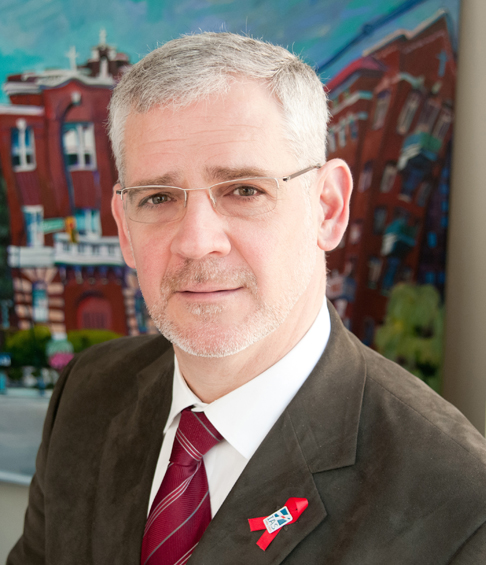A new study by UBC researchers shows that highly active antiretroviral therapy (HAART) reduces new HIV diagnoses, deaths and HIV prevalence, suggesting that the treatment-as-prevention strategy — pioneered in British Columbia — should be implemented across the country.
The study, published in the online journal PLoS One, investigated patterns of new HIV diagnoses, HIV-related mortality and HAART use in Canada from 1995 to 2008. Analysis showed that for each 10 per cent increment in HAART coverage, the rate of new HIV diagnoses decreased by eight per cent in B.C., Ontario and Quebec — three provinces with the largest epidemics.
The same week as that study was published, B.C. Minister of Health Margaret MacDiarmid announced $19.9 million in annual funding for the expansion of a successful pilot program based on treatment-as-prevention. The province’s health authorities will carry out the expansion, with support and leadership from the BC Centre for Excellence in HIV/AIDS, which pioneered treatment-as-prevention under the leadership of UBC Professor Julio Montaner.
Beginning April 1, 2013, the Seek and Treat for Optimal Prevention of HIV/AIDS (STOP HIV/AIDS) program will allow health professionals and community partners to better engage the broader community and specific at-risk groups in HIV testing, reach more people with HIV/AIDS, and enable more people to be treated.
Some examples of where health authorities could spend the money include: new outreach programs, new HIV testing technologies like rapid point of care testing, additional front line staff or funding for community groups to run prevention, testing, treatment and support programs.
The initial four-year, $48-million pilot started in 2009 in Vancouver and Prince George, and has allowed health professionals in the pilot areas to identify more people that have HIV/AIDS and enabled more people to be treated. In contrast, in non-pilot health authorities, there has been an overall decline in the number of people being diagnosed with HIV and the number of people accessing treatment.
The treatment-as-prevention strategy involves widespread HIV testing and immediate provision of anti-HIV drugs known as HAART to medically eligible people with HIV. The BC-CfE has demonstrated that the benefits of early HAART treatment are twofold: it reduces the level of HIV in the blood to undetectable levels thus improving the health of people with HIV, and decreases the level of HIV in sexual fluids to undetectable levels thus reducing the likelihood of HIV transmission by more than 95 per cent.
HIV medications are free of charge to all B.C. residents living with HIV, and HAART has been adopted in Canada and around the world as the gold standard of treatment. In British Columbia, HIV/AIDS-related morbidity and mortality have decreased by over 90 per cent since 1996, as a result of the use of HAART. Over the same period, new HIV infections per year in British Columbia decreased by two-thirds, from 900 in the mid-1990s to 289 in 2011. An estimated 13,000 people in B.C. are living with HIV/AIDS, with as many as 3,500 people still unaware they are living with HIV.
“With the support of the government of B.C., we are leading the way to eliminate HIV/AIDS,” said Dr. Montaner, who is Head of UBC’s Division of AIDS. “We are the only province in Canada showing a consistent decline of new HIV diagnoses, which will continue as a result of the expansion of the STOP HIV/AIDS initiative to the rest of the province. The world is watching closely as B.C. continues to make progress towards the goal of an ‘AIDS-Free Generation’.”
The treatment-as-prevention concept has been endorsed by the World Health Organization, UNAIDS and The Clinton Foundation.
“Offering free treatment for all people diagnosed with HIV will ensure that they can stay healthy and productive. It will also maximize the prevention effects of treatment by significantly reducing the risk of new HIV infections,” said Michel Sidibé, executive director of the Joint United Nations Programme on HIV/AIDS (UNAIDS). “We applaud the British Columbia government for its support of this pioneering work by the BC Centre for Excellence in HIV/AIDS.”
The PLoS One study showed that B.C. has also averted more cases of HIV than Ontario and Quebec combined. Findings showed that in 2008, the province averted 10.33 cases of HIV per 100,000 population compared to 3.40 and 0.33 averted cases for Ontario and Quebec respectively. In other provinces HAART coverage is more limited, and the number of new HIV diagnoses per year has remained relatively unchanged, even increasing in some jurisdictions. B.C. is the only province to offer fully free HAART to all HIV infected individuals.
“The dramatic and sustained decrease in AIDS-related morbidity and mortality and new HIV infections in British Columbia reinforces Treatment as Prevention as a highly effective approach in the fight against HIV/AIDS,” said Dr. Montaner, the senior author of the study.
